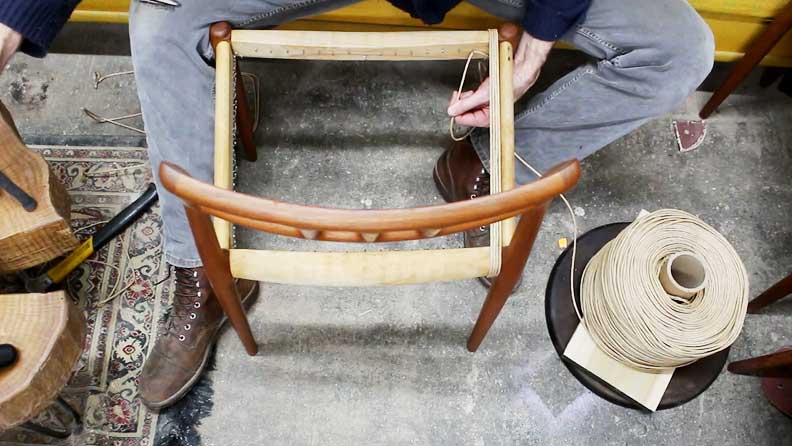Tools and Materials

To embark on a Danish Cord weaving journey, having the right tools and materials is essential. This chapter will guide you through the essential equipment needed to get started, ensuring a smooth and enjoyable weaving experience.
Basic Tools for Danish Cord Weaving
Scissors: A good pair of sharp scissors is essential for cutting Danish Cord to the desired length and for trimming excess cord during the weaving process.
Pliers: Pliers, preferably needle-nose or long-nose pliers, are helpful for pulling and tightening cord during weaving, particularly in hard-to-reach areas.
Spring hand clamps: If you are weaving a chair seat, clamps can be used to secure the cord to the frame and maintain tensability while weaving.
Tape Measure or ruler: Accurate measurements are essential for achieving symmetrical weaving patterns. A tape measure helps ensure uniform spacing and alignment, including those of hook nails, when used.
Hammer: For fixing the hook nails on the frame of the chair or bench. Nails are often used in woven seats, but not not always.
Optional Tools and Accessories:
Sewing Needles: Large sewing needles with blunt tips are useful for tucking cord ends neatly under neighbouring strands at the beginning and end of each weaving session.
Soft Brush or Cloth: A soft brush or cloth is handy for cleaning and maintaining the woven surface, removing dust and debris.
Cord Organizer: Keeping the Danish Cord organized during the weaving process can prevent tangling and make the task more efficient. Cord organizers or a ‘lazy susan’ are helpful for this purpose.
Sourcing Danish Cord:
When selecting Danish Cord for your weaving projects, consider the following factors:
Quality: Opt for high-quality Danish Cord made from natural fibres (paper) to ensure durability and a pleasing weaving experience.
Colour and Thickness: Choose cord thickness and colours that align with your project’s requirements and design vision. Experimenting with different cord types and colours can add unique flair to your weavings.
Sustainability: Look for environmentally responsible sources of Danish Cord which can be identified when they carry a certification such as the. FSC mark (www.fsc.org), supporting brands that prioritize sustainable practices.
Setting Up Your Weaving Workspace
Before diving into Danish Cord weaving, organize your workspace for maximum efficiency and comfort:
Working area: Ensure you have good space where you can comfortably set up your chair frame or weaving project. Favour good ergonomics as a weaving project can take hours. Also, ensure the cord is kept in a dry place whilst working or when in storage.
Good Light: Adequate, ideally natural light is essential for precise weaving and reducing strain on your eyes.
Comfortable Seating: Invest in a comfortable chair or stool (made with Danish cord?), as Danish Cord weaving can be a time-consuming process.
Organize Tools and Materials: Arrange your tools and materials in a convenient and accessible manner to avoid unnecessary interruptions during weaving sessions.
Safety Precautions
While Danish Cord weaving is generally safe, it’s essential to take a few precautions.
Protective Gear: Protective gloves can quickly become essential to avoid strain on your hands as pulling the cord with bare hands can become tiresome and even produce blisters.
Sharp Tools Handling: Exercise caution when using sharp tools like utility knives or scissors. Store them safely when not in use. Also, strings of cord can become a tripping hazard when moving around your work space. With the right tools and materials at your disposal and a well-organized workspace, you’re ready to dive into the art of Danish Cord weaving.
